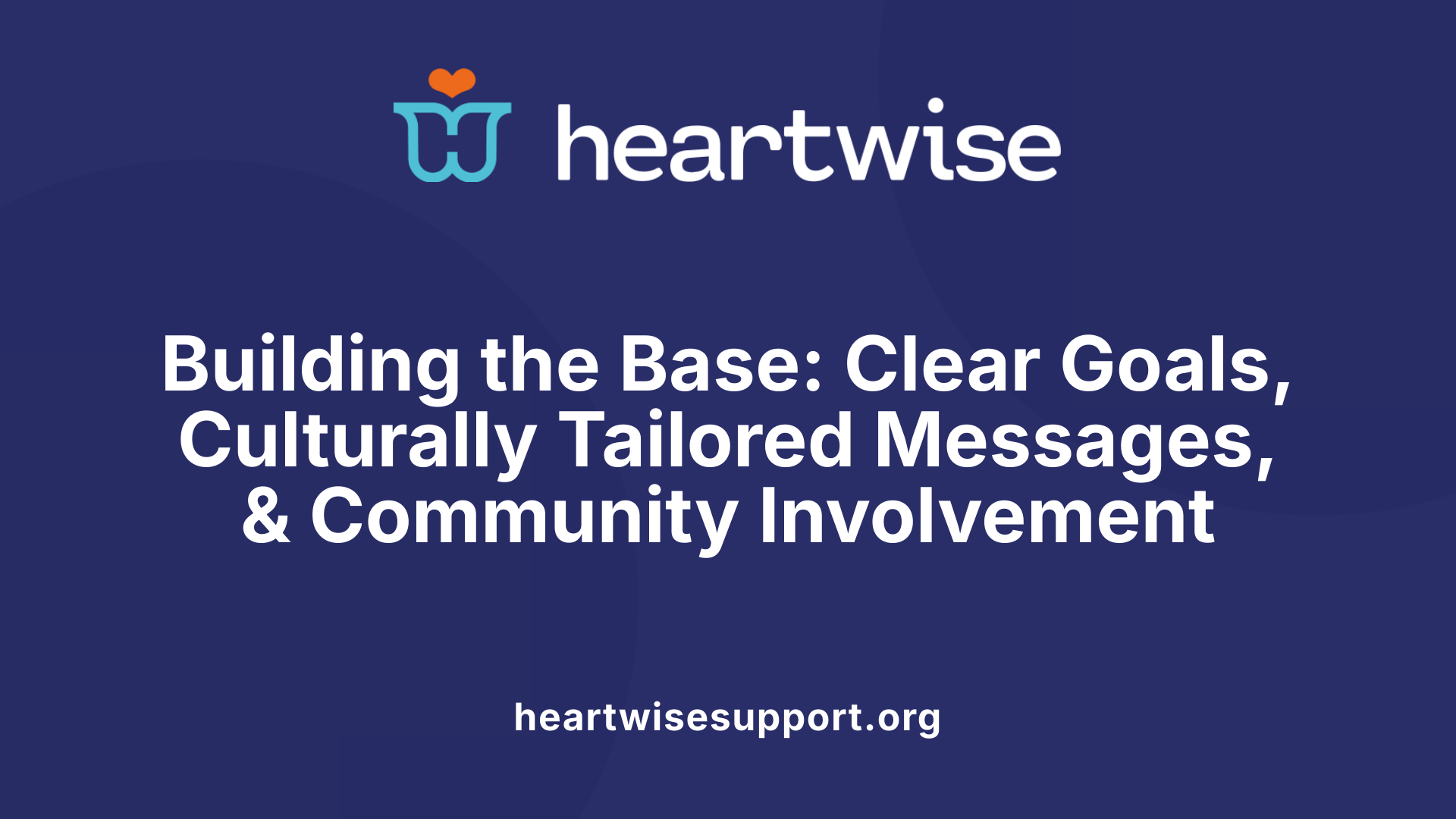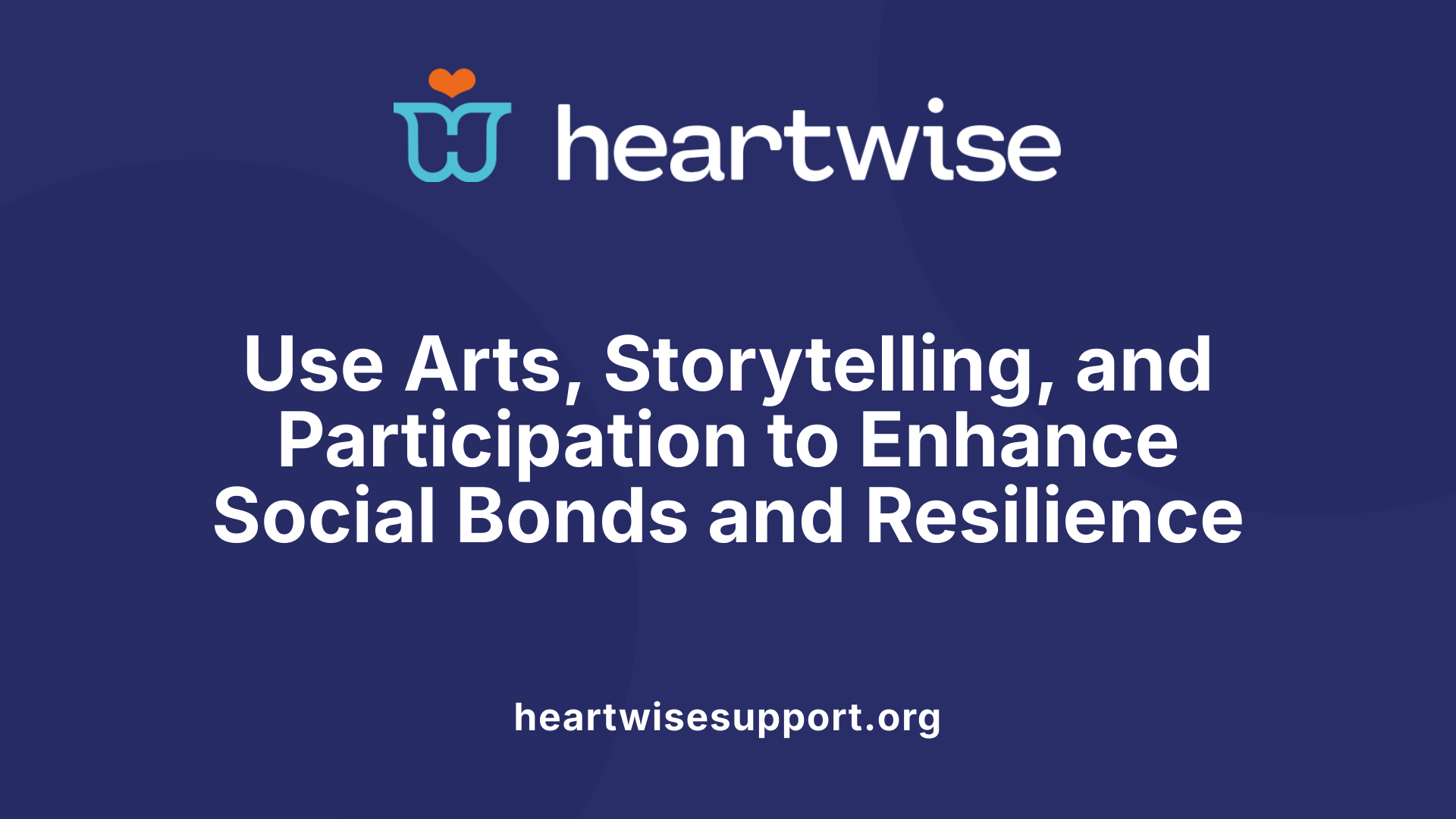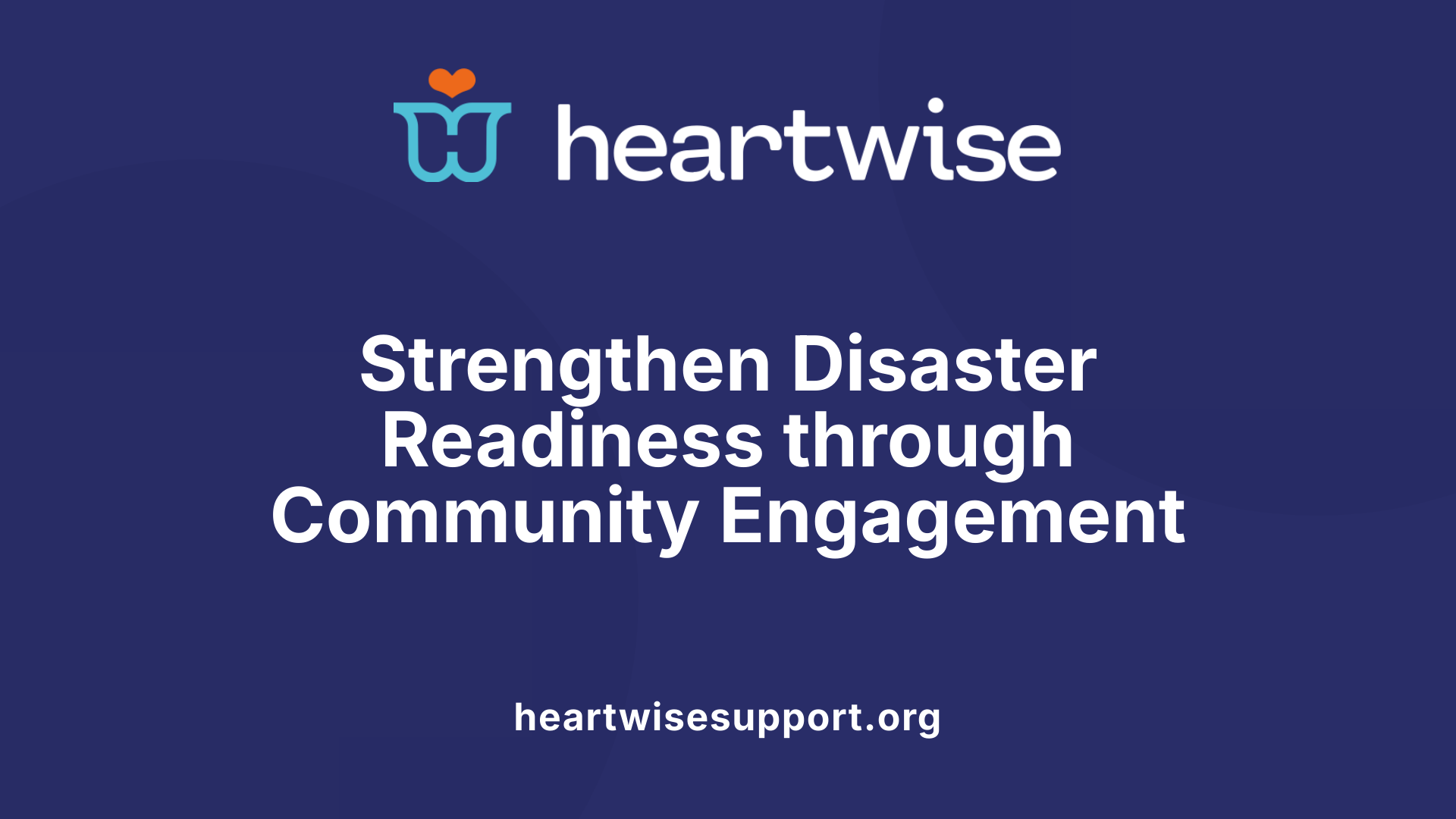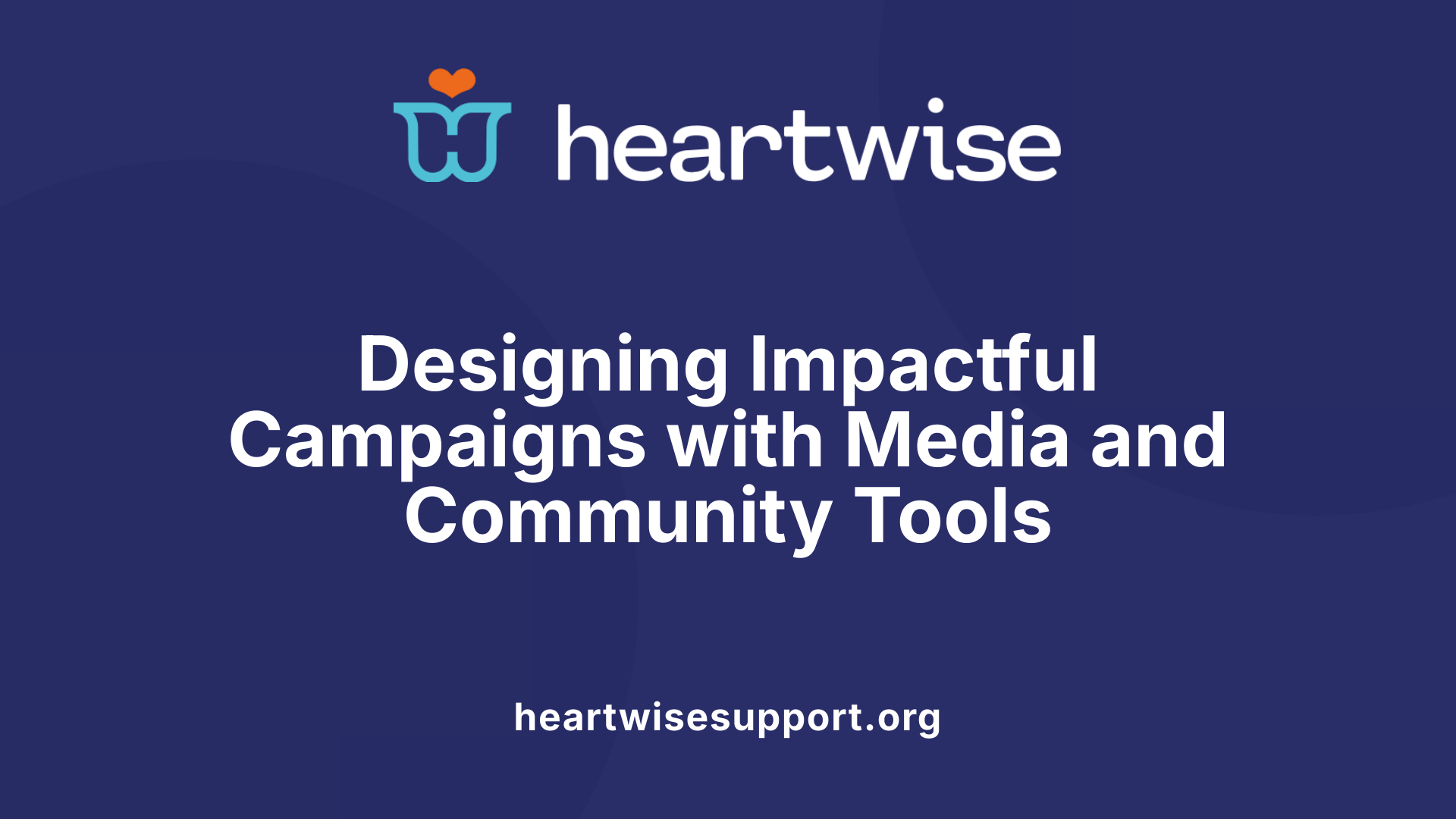Understanding the Power of Community Awareness Campaigns
Community awareness campaigns are potent tools that foster societal change, improve health outcomes, and strengthen community resilience. By educating, mobilizing, and empowering residents, these campaigns can address pressing social issues, influence policy reforms, and enhance disaster preparedness. This comprehensive overview explores the strategies behind successful campaigns, their broad impacts, and best practices to maximize their efficacy, illustrating their critical role in shaping healthier, safer, and more equitable communities.
Foundations of Effective Community Awareness Campaigns

What are some strategies and best practices for designing and evaluating community awareness campaigns?
Successful community awareness campaigns are grounded in clear goal setting, targeted messaging, and the strategic use of a variety of communication channels. It is essential to identify specific objectives such as increasing awareness, changing behaviors, or influencing policy, and to choose messages that resonate with the community's values and cultural context.
Incorporating storytelling, emotional appeals, and compelling visuals can make messages more engaging and memorable. For example, health campaigns like Mayo Clinic's online patient support groups or Charité Berlin’s innovative 3-D printed visuals effectively communicate complex information.
Collaboration with local leaders, organizations, and influencers enhances credibility and helps reach diverse populations. Participatory activities, such as community events or arts-based engagement, foster a sense of ownership and increase community involvement.
Regular evaluation through metrics like reach, engagement levels, behavior change indicators, and media coverage allows organizers to assess progress, refine strategies, and demonstrate impact. Incorporating feedback from community members ensures the campaign remains relevant and effective.
Aligning activities with awareness days or annual observances can sustain momentum. Setting SMART (specific, measurable, achievable, realistic, time-bound) objectives provides clarity and direction, helping to maintain focus and measure success consistently.
How effective are public awareness campaigns in improving health outcomes and addressing social issues?
When designed thoughtfully, public awareness campaigns can significantly influence health behaviors and social attitudes. For instance, campaigns like the ALS Ice Bucket Challenge managed to raise substantial funds and awareness, leading to increased research and breakthroughs.
Similarly, campaigns targeting specific behaviors—such as 'Dry January' promoting reduced alcohol consumption—encourage healthier lifestyles through socially engaging and easy-to-understand messages. Digital health campaigns, including Mayo Clinic's social media initiatives or Charité Berlin’s innovative awareness visuals, expand reach and accessibility.
Effective campaigns also facilitate community support by providing essential information and resources, which can lead to early detection and treatment, as seen with the cancer awareness roadshow that increased awareness and reduced smoking rates.
However, the impact can be limited by challenges such as misinformation, cultural resistance, or deeply rooted personal beliefs. Vaccine hesitancy illustrates this, where campaigns face the task of balancing factual information with cultural sensitivities.
Overall, when campaigns are culturally sensitive, evidence-based, and involve community participation, they are more likely to achieve meaningful improvements in health and social issues.
Components of successful campaigns
| Component | Description | Examples |
|---|---|---|
| Clear objectives | Define precise, measurable goals to guide activities and evaluation | Reducing smoking prevalence by 10% in a community |
| Culturally tailored messaging | Customize messages to fit cultural and linguistic contexts for better engagement | Using local languages and cultural references in campaigns |
| Multi-channel approach | Utilize diverse media platforms like TV, radio, social media, community events to maximize reach | #DizzyGoals Campaign leveraging social media and celebrities |
| Community involvement | Engage local leaders, organizations, and residents to foster ownership and relevance | Community roadshows, local health fairs |
| Continuous evaluation | Monitor progress regularly via KPIs, feedback, and adaptation to improve effectiveness | Post-campaign surveys, engagement analytics |
| Policy alignment | Ensure campaigns support broader national or international policy goals | SDG awareness campaigns aligning with 2030 Agenda |
The importance of shared terminology and culturally tailored messaging
Using clear, shared terminology helps avoid confusion and ensures consistency across campaigns. Bridging language barriers and simplifying complex concepts enhances understanding.
Culturally tailored messaging recognizes community specific values, beliefs, and practices. For example, community-driven initiatives like BAJI’s campaigns on migration highlight the importance of local context in advocacy efforts.
By localizing messages—such as referencing local health concerns or community issues—campaigns can foster better engagement and trust. Stories and testimonies from community members increase emotional resonance and credibility.
Use of multiple media channels for broad reach
Effective campaigns employ diverse channels to ensure broad coverage. Traditional media, such as newspapers and radio, reach older or less digitally connected audiences.
Digital tools like social media, websites, and mobile apps connect with younger populations and facilitate interactive participation. Campaigns like 'Geek the Library' demonstrated success through social media advocacy, increasing community support and funding.
Arts and humanities-based activities, including storytelling, street theater, and visual arts, can express complex issues and emotional experiences, fostering reflection and dialogue.
Timing activities around international awareness days or major events leverages existing public interest and media coverage to increase impact.
Using multiple channels creates reinforcement of key messages and ensures accessibility for diverse community segments, vital for sustainable and inclusive awareness efforts.
Building Community Engagement and Social Cohesion

How can storytelling, arts, and humanities be used to express experiences?
Utilizing storytelling, arts, and humanities offers powerful ways for communities to communicate shared experiences, especially concerning illness, death, and resilience. Artistic expressions such as theater, visual arts, music, and literary works serve as platforms for individuals to narrate personal journeys, express emotions, and foster a collective understanding of complex issues. For example, storytelling can humanize abstract health challenges, making them more relatable and compelling.
Artistic initiatives often evoke empathy and reflection, enabling community members to connect emotionally and understand diverse perspectives. These methods transform individual stories into a collective narrative that sustains dialogue, promotes understanding, and preserves cultural identities.
In what ways can community involvement support health and disaster preparedness?
Active community participation at multiple levels—local, regional, and national—is essential to building resilient societies. Engagement through forums, workshops, and local events empowers residents to take ownership of health initiatives and disaster readiness strategies. When communities are involved in planning and decision-making, programs are better tailored to local needs, which enhances their effectiveness.
Furthermore, involving diverse groups—including youth, elders, faith-based organizations, and marginalized populations—ensures inclusivity and strengthens social bonds. Community-based initiatives promote shared responsibility, trust, and cooperation, which are critical during emergencies.
What is the significance of storytelling in fostering reflection and dialogue?
Storytelling acts as a bridge to deepen reflection and facilitate open dialogue about challenging topics such as illness, death, and social injustices. Personal stories expose community members to different experiences, fostering empathy and reducing stigma. When individuals share their narratives in safe, culturally sensitive environments, it encourages others to reflect on their own attitudes and beliefs.
This reflective process can inspire collective action, influence social norms, and drive policy change. Moreover, storytelling nurtures vital social skills—listening, empathy, and critical thinking—that are foundational for community cohesion.
Role of community awareness efforts in disaster preparedness and response
Community awareness campaigns form the backbone of effective disaster management. They educate residents about risks, safety protocols, and evacuation procedures, fostering a culture of preparedness. These initiatives stimulate local leadership and empower residents through skills development such as asset mapping, needs assessments, and conflict resolution.
Engaging various sectors—including faith groups, youth, and local organizations—strengthens collaboration, resource sharing, and trust, which are crucial during crises. Community volunteers and local knowledge contribute significantly to emergency response activities—such as evacuation efforts, resource distribution, and victim support—reducing suffering and promoting recovery.
Sustained awareness and active participation cultivate a resilient community capable of responding effectively to disasters. Over time, these efforts build a culture of trust, mutual support, and shared responsibility, which enhances overall community resilience.
How do community-driven campaigns influence social change?
Community-driven campaigns mobilize marginalized groups by allowing them to define their advocacy goals and lead social change efforts. Training local members in organizing, coalition-building, and advocacy empowers communities to address systemic issues—such as injustice, racial profiling, or lack of access to healthcare.
Organizations like BAJI and Beyond Legal Aid exemplify how grassroots efforts can influence policy changes by drawing on lived experiences and community knowledge. These campaigns often succeed in shifting public policy, raising awareness, and altering perceptions.
By fostering local leadership, community campaigns generate sustainable movements that resonate with broader social and political contexts. They also strengthen community ties, amplify voices, and promote a sense of ownership and efficacy.
Which role do arts and storytelling play in disaster response?
In disaster response, arts and storytelling serve as vital tools for emotional healing, resilience-building, and raising awareness. Creative expressions help communities process trauma, share experiences, and foster solidarity. Artistic projects—like memorials, murals, or performances—can communicate collective grief and hope.
Stories told through film, theater, or visual arts highlight community strengths and vulnerabilities, encouraging collective reflection and learning. Such initiatives also increase public awareness about risks and preparedness measures.
Furthermore, incorporating arts into disaster education can make safety messages more engaging and memorable, ultimately promoting safer behaviors. These cultural expressions nurture communal bonds, which are essential during recovery and rebuilding phases.
How does public engagement through arts and storytelling foster social cohesion?
Public engagement via arts and storytelling enhances social cohesion by creating shared cultural spaces where individuals can connect, express, and understand each other's experiences. These activities foster inclusivity, reduce social divides, and build common identities.
Community events, theater performances, art exhibitions, and storytelling circles encourage participation from diverse groups, cultivating mutual respect and empathy. As community members share their stories, they recognize common struggles and aspirations, strengthening their social fabric.
This social cohesion is critical for collective action, especially in times of crisis such as natural disasters or health emergencies, where unity enhances resilience and recovery.
How does community awareness contribute to health and disaster resilience?
Building community awareness is fundamental to health promotion and disaster preparedness. Educated communities are more likely to adopt preventive behaviors, recognize early warning signs, and participate actively in response activities.
Awareness campaigns tailored to local contexts foster a sense of ownership and responsibility, motivating sustained engagement. They can also identify vulnerable populations needing targeted interventions.
When communities are informed and empowered, they develop a proactive stance—reducing risks, minimizing harm, and accelerating recovery from adverse events. This collective vigilance and readiness cultivate long-term resilience, making communities safer and healthier.
| Aspect | Description | Example | Impact |
|---|---|---|---|
| Storytelling and Arts | Facilitate expression, foster reflection, and promote dialogue | Artistic projects, narratives, community art events | Enhance empathy, preserve culture, support social change |
| Community Involvement | Empower local participation, strengthen social bonds | Community workshops, local leadership training | Improved program relevance and sustainability |
| Disaster Preparedness | Educate, train, and activate community members | Asset mapping, emergency drills | Increased safety, faster response, reduced suffering |
| Social Change | Mobilize marginalized groups, influence policy | Grassroots campaigns, advocacy training | Policy reform, social justice |
| Cultural Cohesion | Build shared identity, reduce divides | Community storytelling events, cultural festivals | Increased trust, cooperation, and resilience |
Engaging communities through arts and storytelling, coupled with inclusive participation and tailored awareness initiatives, can significantly enhance social cohesion and resilience across health, social, and disaster contexts.
Quantifying the Impact of Community Initiatives
How effective are community awareness campaigns in improving health outcomes and addressing social issues?
Public awareness efforts can be remarkably effective when carefully tailored to communities’ specific needs and cultural contexts. A variety of campaigns demonstrate this success across health and social issues.
For instance, community-based cancer awareness roadshows have shown promising results. These initiatives involve engaging local populations directly with educational activities about cancer risk factors, early signs, and the importance of timely medical consultation.
Research involving 1,196 participants revealed tangible improvements following such roadshows. Participants exhibited increased awareness of cancer risks, more positive attitudes toward seeking medical help, and most of these gains persisted after two months. Additionally, a significant 16% of smokers reported quitting within two months after attending the roadshow, highlighting a favorable change in health behaviors.
Similarly, awareness campaigns promoting healthy behaviors, such as the 'Know Your Lemons' initiative for breast cancer, have effectively reached diverse populations by incorporating culturally sensitive and creative messaging. Viral campaigns like the ALS Ice Bucket Challenge successfully raised funding and awareness, demonstrating the power of social media in amplifying health messages.
However, challenges can arise from misinformation, societal stigma, or deeply ingrained personal beliefs. For example, vaccine hesitancy persists despite extensive awareness campaigns, underscoring the need for trust-building and accurate information dissemination. The complexity of influencing attitudes and beliefs indicates that while campaigns can be impactful, their success often depends on continuous engagement and community involvement.
What are the benefits of community awareness campaigns?
These initiatives foster long-term behavioral change by improving community-wide understanding of health risks, safety issues, and social concerns. Education campaigns about crime prevention—like neighborhood watch programs—strengthen collective responsibility and social cohesion, leading to safer environments.
Applying environmental safety measures, such as Crime Prevention Through Environmental Design (CPTED), further discourages criminal activity. These strategies include street lighting, organized community patrols, and public space modifications, which showcase how awareness can translate into structural change.
Moreover, community-driven campaigns cultivate stronger bonds among residents, local organizations, and decision-makers. For example, youth education programs and neighborhood initiatives create a culture of proactive engagement, which correlates with reduced crime rates and increased community resilience.
A practical illustration of this is the implementation of community resource libraries, public seminars, and collaborative projects involving multiple stakeholders—from law enforcement to educational institutions. These efforts foster an environment where shared responsibility leads to sustainable improvements.
Data on awareness, attitudes, and behavioral changes
Empirical data underscores the positive effects of community projects. The cancer roadshow study, for example, showed sustained improvements in awareness and attitudes, with health-positive behaviors, such as smoking cessation, following shortly after interventions.
Furthermore, surveys of campaign participants reveal increased use of healthcare services and greater engagement with health promotion activities. Such behavior changes are critical in early disease detection, prevention, and overall community health enhancement.
Community involvement doesn't solely influence health outcomes. Social campaigns emphasizing crime awareness and prevention lead to measurable reductions in local crime rates and improved perceptions of safety. In many cases, these initiatives have garnered community support, increased participation in local events, and fostered collaborations that extend beyond the initial campaigns.
In totality, community initiatives backed by research clearly demonstrate tangible benefits. They enhance knowledge, positively shift attitudes, alter behaviors, and ultimately contribute to healthier, safer, and more resilient neighborhoods.
| Campaign Type | Outcomes | Measurement Tools | Notable Examples |
|---|---|---|---|
| Cancer awareness roadshows | Increased knowledge, behavior change (smoking cessation) | Questionnaires, follow-up surveys | Community cancer screening events |
| Violence prevention campaigns | Reduced crime, improved perceptions of safety | Crime statistics, surveys | Neighborhood watch programs |
| Health promotion via social media | Greater health literacy, early intervention | Digital engagement metrics | #DizzyGoals Challenge, ALS Ice Bucket Challenge |
| Public health education campaigns | Improved health behaviors, service utilization | Healthcare usage data, surveys | Mayo Clinic Connect, Charité Parkinson’s campaign |
Effective community campaigns require thoughtful planning, clear messaging, community engagement, and continuous follow-up to sustain impacts. As their influence grows, these initiatives can lead to meaningful societal transformations.
Strategies for Designing Effective Campaigns

Use of SMART Objectives
Setting objectives that are Specific, Measurable, Achievable, Realistic, and Time-bound (SMART) is essential for the success of community awareness campaigns. Clear goals allow campaign planners to focus their efforts, allocate resources effectively, and identify the benchmarks for success. For instance, a campaign aiming to increase awareness about palliative care might set a target to reach 50,000 people through various media channels within three months, with specific strategies to measure changes in awareness levels before and after the campaign.
SMART objectives serve as a roadmap, guiding all campaign activities and facilitating assessment of progress. They also help in engaging stakeholders, securing funding, and maintaining accountability throughout the campaign lifecycle.
Creating a Culture of Empowerment and Policy Change

How can community awareness campaigns foster social change, policy reform, and community empowerment?
Community awareness campaigns play a vital role in shaping social change, influencing policy reforms, and empowering local populations. They act as catalysts by mobilizing public support and encouraging the active participation of diverse community members. Through targeted strategies such as community organizing, town hall meetings, and coalition building, these campaigns help cultivate social capital and foster inclusivity within communities.
Building strong alliances among marginalized groups and local leaders enhances collective voice and visibility. These collaborations strengthen social networks, making communities more resilient and capable of advocating for their interests.
By raising awareness on critical issues, campaigns can influence policymakers and government agencies. They often conduct research, provide evidence-based recommendations, and carry out advocacy efforts to push for systemic reforms that address root causes of social injustices.
Digital platforms significantly expand the reach of these initiatives. Social media, online petitions, and community forums allow grassroots movements to grow beyond geographical constraints, engaging wider audiences and maintaining momentum.
Grassroots activities such as community forums and digital storytelling foster trust and transparency. These approaches enable citizens to share personal experiences, highlight community needs, and participate in decision-making processes.
The cycle of empowerment fueled by well-organized awareness efforts encourages sustained civic participation. As communities see tangible policy changes and social improvements, their confidence and willingness to engage deepen.
Overall, community-led campaigns serve as powerful tools for fostering systemic change. They cultivate an environment where community members are informed, empowered, and equipped to advocate for policies that reflect their realities and aspirations, ultimately driving long-term social transformation.
Integrating Community Awareness with Disaster Preparedness Initiatives

What role do community awareness efforts play in disaster preparedness and response?
Community awareness efforts are essential components in strengthening disaster preparedness and response capabilities. They serve to educate local residents about the potential risks facing their region, such as natural calamities, industrial hazards, or public health emergencies. By increasing knowledge of hazards and the proper actions to take, these campaigns foster a culture of readiness that empowers individuals and families.
Effective awareness initiatives do more than just inform; they build local leadership and promote active participation. Skills such as asset mapping—identifying local resources—and needs assessments become vital during crises, enabling communities to respond swiftly and efficiently.
Engaging different sectors—including faith-based groups, youth organizations, schools, and community health workers—enhances coordination and trust among responders. This broad involvement helps develop resilient networks capable of sharing resources, disseminating information quickly, and supporting vulnerable populations.
Community volunteers and local knowledge are invaluable during actual emergency situations. They often lead activities like evacuation, resource distribution, first aid, and caring for victims. Their involvement not only accelerates response times but also reduces suffering and simplifies recovery processes.
Sustained education and ongoing engagement cultivate a resilient community environment. Regular drills, workshops, and public information campaigns foster a preparedness mindset that transcends individual effort, promoting mutual support and collective action.
Ultimately, awareness efforts transform communities into active participants in disaster management, minimizing damage and accelerating recovery. This proactive approach nurtures trust, reduces panic, and ensures that local populations are equipped to handle crises effectively.
Role of Evidence, Monitoring, and Partnerships
Why are evaluation and feedback essential in community awareness campaigns?
Effective community awareness efforts rely heavily on ongoing assessment and feedback. Regular evaluation helps determine whether a campaign is meeting its objectives, reaching the target audience, and inspiring the desired changes in attitudes and behaviors. Collecting data through surveys, media analytics, and community responses provides insight into what strategies are working and where adjustments are needed.
Monitoring metrics such as media reach, engagement levels, and action rates (like help-seeking behavior or behavioral changes) is crucial. These metrics illustrate the campaign's influence over time and help justify resource allocation. Additionally, feedback from community members and stakeholders enriches understanding about perceived relevance, cultural appropriateness, and potential barriers.
Continuous feedback loops enable organizers to refine messaging, channels, and activities, ensuring that the campaign remains relevant and effective. This adaptive approach sustains momentum and enhances the likelihood of lasting impact.
How do partnerships and coalitions support the success of awareness initiatives?
Building strong collaborations enhances the reach and credibility of awareness campaigns. Partnerships with local organizations, community leaders, healthcare providers, educational institutions, and media outlets create a network of support.
Coalitions bring diverse expertise and resources, allowing campaigns to target multiple demographics and address cultural sensitivities effectively. For example, involving community influencers in messaging can improve trust and relatability.
Moreover, joint activities—like community events, workshops, and social media campaigns—generate wider visibility and foster a sense of collective responsibility. They also facilitate resource sharing, such as funding, volunteers, and educational materials, reducing individual organizational burden.
Partnerships also help in advocacy, influencing policy, and ensuring sustainability beyond initial project timelines. They enable campaigns to embed within broader health, social, and awareness programs, creating a multiplier effect.
What methods are effective for monitoring impact and refining strategies?
Impact monitoring employs both quantitative and qualitative methods. Quantitative tools include surveys, social media analytics, and website traffic data to measure reach and engagement.
Qualitative feedback, gathered through focus groups, interviews, and community discussions, provides depth on community perceptions, barriers faced, and facilitators of change.
Regular reporting cycles, such as monthly or quarterly reviews, facilitate timely adjustments. For example, if digital engagement is lower than expected, strategies might shift toward more targeted or diverse media channels.
Use of SMART (Specific, Measurable, Achievable, Realistic, Time-bound) objectives allows for clear milestones and performance indicators. These facilitate systematic assessment of progress.
Evaluation results should inform strategic planning, resource allocation, and content development. Incorporating lessons learned promotes continuous improvement and long-term sustainability.
What strategies and best practices for designing and evaluating community awareness campaigns?
Effective community awareness campaigns are built on clear goal setting, targeted messaging, and strategic use of multiple channels such as social media, traditional media, and community events to reach diverse audiences. Incorporating compelling storytelling, emotional resonance, and visual content helps create impactful messages that inspire action and foster community engagement.
Collaboration with community leaders, organizations, and influencers, along with participatory activities, enhances credibility and community buy-in. Regular monitoring and evaluation using metrics like reach, engagement, and actions taken allow for continuous refinement and demonstrate impact.
Additionally, aligning campaigns with relevant awareness days and setting specific, measurable objectives ensure sustained momentum and success.
Harnessing Media and Community Engagement Technologies

What are some strategies and best practices for designing and evaluating community awareness campaigns?
Effective community awareness campaigns are crafted around several fundamental strategies. First, clear goal setting is essential. Campaigns should have specific, measurable objectives that guide all activities and allow for proper evaluation of their success. Defining target audiences based on demographics, cultural background, and community needs helps tailor messages effectively.
Using a mix of communication channels increases reach and impact. This includes social media platforms like Facebook, Twitter, and Instagram, traditional media such as radio, TV, and newspapers, and community events like fairs, workshops, and participatory activities. Incorporating storytelling—sharing real-life experiences and emotional narratives—creates memorable messages that resonate deeply and motivate action.
Visual content, such as infographics, videos, and creative artwork, enhances message retention and engagement. Collaborating with trusted community leaders, local organizations, and influencers fosters credibility, ensures cultural relevance, and builds trust.
Participatory activities like community forums, arts projects, and grassroots campaigns encourage community involvement and ownership of the initiative. These activities not only spread awareness but also strengthen social bonds and empower community members.
Monitoring and evaluating campaigns are vital for understanding their effectiveness. Using metrics such as reach (number of people exposed), engagement (likes, shares, discussions), and behavioral actions (help-seeking, participation in events) provides insights into what works well. Regular assessments allow for refinement and adjustments to improve outcomes.
Aligning campaigns with broader health and social policies, awareness days, and national initiatives helps create synergies and sustained momentum. Setting SMART (Specific, Measurable, Achievable, Realistic, Time-bound) objectives keeps campaigns focused and provides clear benchmarks for success.
In summary, integrating strategic planning, diverse communication methods, participatory activities, and ongoing evaluation fosters impactful community awareness efforts that can lead to meaningful behavioral change and community empowerment.
Use of digital media, social platforms
Digital media and social platforms are increasingly central in awareness campaigns. They allow rapid dissemination of information, interaction with diverse audiences, and facilitation of community dialogues. Campaigns like the #DizzyGoals Challenge leverage hashtags, celebrity influence, and viral content to reach millions worldwide, raising SDG awareness effectively.
Harnessing these tools involves creating shareable content tailored to platform-specific formats, engaging audiences through interactive posts, and encouraging user-generated content. Digital tools also support targeted advertising and geo-specific messaging, optimizing reach among specific populations.
Community events and participatory media
Community events such as health fairs, storytelling sessions, arts and humanities activities, and disaster preparedness roadshows foster direct engagement and help express the lived experiences surrounding health issues and social injustices. These forums promote dialogue, reflection, and community cohesion.
Participatory media, including community-created videos, art projects, and interactive performances, enable local voices to be heard and empower community members as active participants rather than passive recipients. Examples include murals depicting health journeys or community forums facilitated through social media platforms.
Innovative tools for outreach
Innovative outreach tools include mobile health applications, virtual reality experiences illustrating health conditions, and 3-D printing models used in awareness campaigns for diseases like Parkinson’s. These tools make complex information accessible and relatable.
Campaigns such as Mayo Clinic’s online communities and Charité Berlin’s printed models demonstrate how new technologies can educate, engage, and motivate diverse audiences.
In conclusion, leveraging digital media, engaging community events, and adopting innovative outreach tools enhance the effectiveness of awareness campaigns. When combined with comprehensive planning, targeted messaging, and rigorous evaluation, these approaches foster healthier communities informed and empowered to take action.
Fostering a Sustainable Future Through Awareness
In summary, community awareness campaigns are instrumental in igniting social change, improving health outcomes, and enhancing disaster response capabilities. Their success hinges on strategic planning, cultural tailoring, community involvement, and continuous evaluation. When well-executed, these initiatives not only inform and educate but also empower communities to become active participants in shaping their futures. As illustrated by numerous case studies—from health interventions to social justice movements—the collective efforts of communities driven by awareness campaigns foster a resilient, informed, and proactive society. Building on these insights, stakeholders are encouraged to develop inclusive, innovative, and sustainable awareness initiatives to meet the ongoing challenges of our dynamic world.
References
- The Impact of Public Health Awareness Campaigns on the ...
- Evaluating the impact of a community-based cancer awareness ...
- Raising Awareness through Public Outreach Campaigns
- Responses when the earth trembles: The impact of community ...
- Community-Driven Campaigns - Justice Power
- The Importance of Healthcare Awareness Campaigns 2024
- [PDF] The Importance of Building Community Awareness and Readiness
- [PDF] The Role of Awareness in Community Health Development
- [PDF] models-of-community-approaches-to-awareness ... - GA SPS











